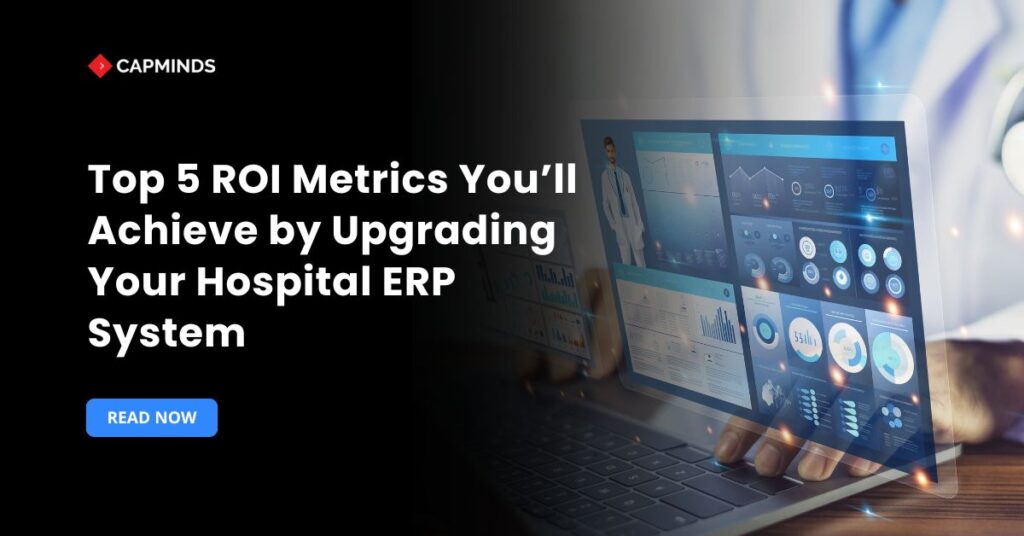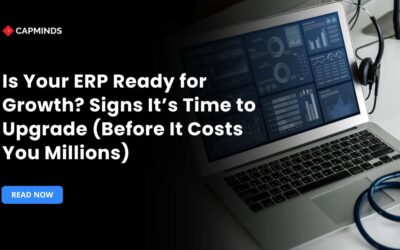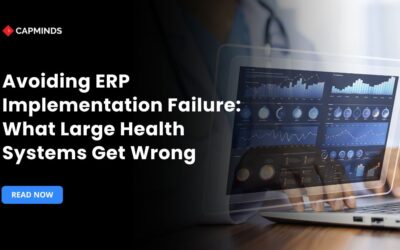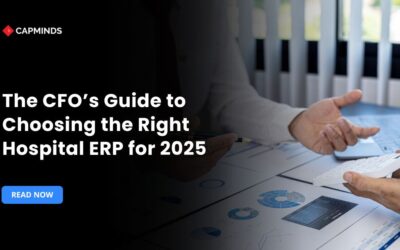Top 5 ROI Metrics You’ll Achieve by Upgrading Your Hospital ERP System
Upgrading to a modern ERP (enterprise resource planning) system delivers measurable ROI in multiple areas. In healthcare, a well-implemented ERP can “reduce operational costs … and increase staff productivity and satisfaction”. By consolidating data and automating workflows, hospitals unlock savings and efficiencies that directly boost the bottom line. Here are the top five ROI metrics hospital leaders should track when investing in an ERP upgrade.
1. Reduced Operational Costs
Upgrading an ERP drives significant cost savings across the hospital. Integrated financial, supply-chain, and inventory management eliminates redundant systems and manual processes. Automation minimizes waste and overspending by ensuring supplies and equipment are purchased and used efficiently.
The result is fewer errors, lower inventory costs, and faster budget control, all of which shrink operating expenses. As one analysis notes, optimizing resource utilization and minimizing waste “leads to significant cost savings,”.
- Streamlined Procurement: Centralized purchasing and inventory control cut wasteful spending. ERP-driven supply-chain automation ensures you buy only what you need when you need it.
- Lower Administrative Overhead: Automating routine tasks (e.g, billing, order processing) eliminates manual labor and errors. Reduced paperwork and software consolidation mean less staff time on back-office work.
- Budget Transparency: Real-time analytics highlight cost drivers and inefficiencies, letting hospitals reallocate funds where they have the most impact.
Each dollar saved on operations is pure ROI. Hospitals report double-digit percentage improvements in efficiency and cost savings after modern ERP implementations.
2. Improved Staff Productivity
A modern ERP frees up clinicians and administrators to focus on patient care rather than paperwork. By automating repetitive tasks and integrating data, ERP systems eliminate bottlenecks that slow staff.
In practice, hospitals see smoother workflows and higher staff satisfaction from ERP-driven digitization. With less time on manual processes, teams can accomplish more with the same headcount – a direct productivity gain.
- Workflow Automation: Automated scheduling, billing, and reporting cut out manual steps. Staff spend less time on spreadsheets and more on patient-facing tasks.
- Single Source of Truth: A unified data platform means nurses, doctors, and admin staff access the same information in real time. This reduces delays in decision-making and prevents duplicated work.
- Better Resource Allocation: Advanced analytics help optimize staffing levels and shift schedules. For example, analyzing admission rates vs. staff levels can “determine the most efficient staffing schedules and reduce overtime costs,” which boosts employee morale and efficiency.
Modernizing the ERP essentially turns “repetitive tasks into streamlined processes”, improving productivity across departments. Happier, more efficient staff translate into better patient service and higher throughput.
Related: The Comprehensive Role of ERP Systems in Healthcare
3. Faster Revenue Cycle Management
New ERP platforms streamline the entire revenue cycle, translating to faster cash flow and higher revenues. Automated billing and claims processes cut down cycle time and errors, so payments arrive sooner. In one report, ERP-driven revenue-cycle automation greatly “reduces the time it takes to receive payments” and “minimizes billing errors,”.
Faster invoicing and collections mean the hospital captures more revenue with fewer AR days.
- Automated Billing and Claims: Integrated billing modules push claims immediately and flag issues automatically, accelerating reimbursements. This reduces the need for costly short-term financing.
- Denial Management and Compliance: ERP systems can automatically check for coding and insurance compliance, lowering denials and rework. Correct first-pass claims improve revenue capture.
- Financial Reporting: Real-time visibility into accounts receivable and cash forecasts helps leaders identify slow-paying accounts and take timely action, maintaining healthy cash flow.
By optimizing the financial back-end, an upgraded ERP ensures that earned revenue is collected promptly. In turn, improved cash flow and fewer write-offs directly increase ROI from the upgrade.
4. Enhanced Regulatory Compliance and Risk Reduction
Healthcare is highly regulated, and ERP upgrades strengthen compliance while reducing risk. Modern ERPs include built-in controls and audit trails that enforce policies and standards automatically.
For example, systems can lock down data access for HIPAA compliance and generate audit logs for inspections. This reduces the likelihood of violations that lead to fines or reputational damage. As one source notes, improved compliance “reduces the risk of penalties”.
- Automated Compliance Checks: ERP workflows can enforce regulatory requirements (e.g. FDA, OSHA, HIPAA) at each step. Automatic alerts and documentation make audits more transparent.
- Data Security: Upgraded systems employ strong encryption and user permissions. Centralized data storage means fewer security gaps. This “ensures data privacy” and keeps sensitive records safe.
- Risk Management: Enhanced reporting identifies anomalies (like unusual billing or supply usage), so issues are caught early. Staying compliant with insurance and regulatory requirements also reduces fines and penalties.
Taken together, these features cut down compliance costs and legal exposure. By reducing risk, an ERP upgrade protects both finances and institutional reputation.
5. Better Decision-Making Through Data Analytics
Modern ERPs turn data into insights. Integrated dashboards and analytics provide real-time views of clinical, financial, and operational KPIs.
With all data in one place, leaders can make informed strategic decisions. ERP systems “provide valuable insights into key performance indicators, enabling informed decision-making”. This means you can spot trends (e.g., rising lab test volumes, length-of-stay patterns) and act proactively.
- Real-Time Dashboards: Leadership sees hospital-wide metrics (capacity, costs, quality) at a glance. For example, trends in emergency visits or supply usage become immediately visible, enabling quick adjustments.
- Predictive Analytics: Some ERPs can forecast needs (staffing, inventory) based on historical data. Predictive staffing can “determine efficient schedules and reduce overtime costs,” lowering expenses.
- Strategic Reporting: Consolidated financial and clinical data support long-term planning. By analyzing profitability by service line or department, hospitals can target investments where they drive the highest ROI.
In short, data-driven insights from an upgraded ERP help administrators allocate resources smartly and plan strategically. Better decisions translate into higher efficiency and improved patient outcomes over time.
Related: The CFO’s Guide to Choosing the Right Hospital ERP for 2025
CapMinds ERP Solution for Hospitals
CapMinds ERP Solution empowers hospitals with a seamless, integrated approach to managing operations, finances, and patient care.
It streamlines workflows, automates key processes, and enhances overall efficiency.
- With advanced analytics, real-time reporting, and interoperability features, CapMinds ERP ensures data-driven decision-making and compliance with industry standards.
- Our tailored ERP solutions are designed to meet the unique needs of healthcare providers, offering scalability, security, and cost-effectiveness for long-term success.
CapMinds ERP prioritizes seamless integration with existing systems, ensuring smooth adoption and minimal disruption to your hospital.
Get the best-in-class ERP solution from CapMinds, featuring intuitive dashboards, automated billing, supply chain management, financial planning, and much more, all customized to fit your needs.
“Optimize your healthcare practice with the most reliable and efficient ERP solution from CapMinds.”




